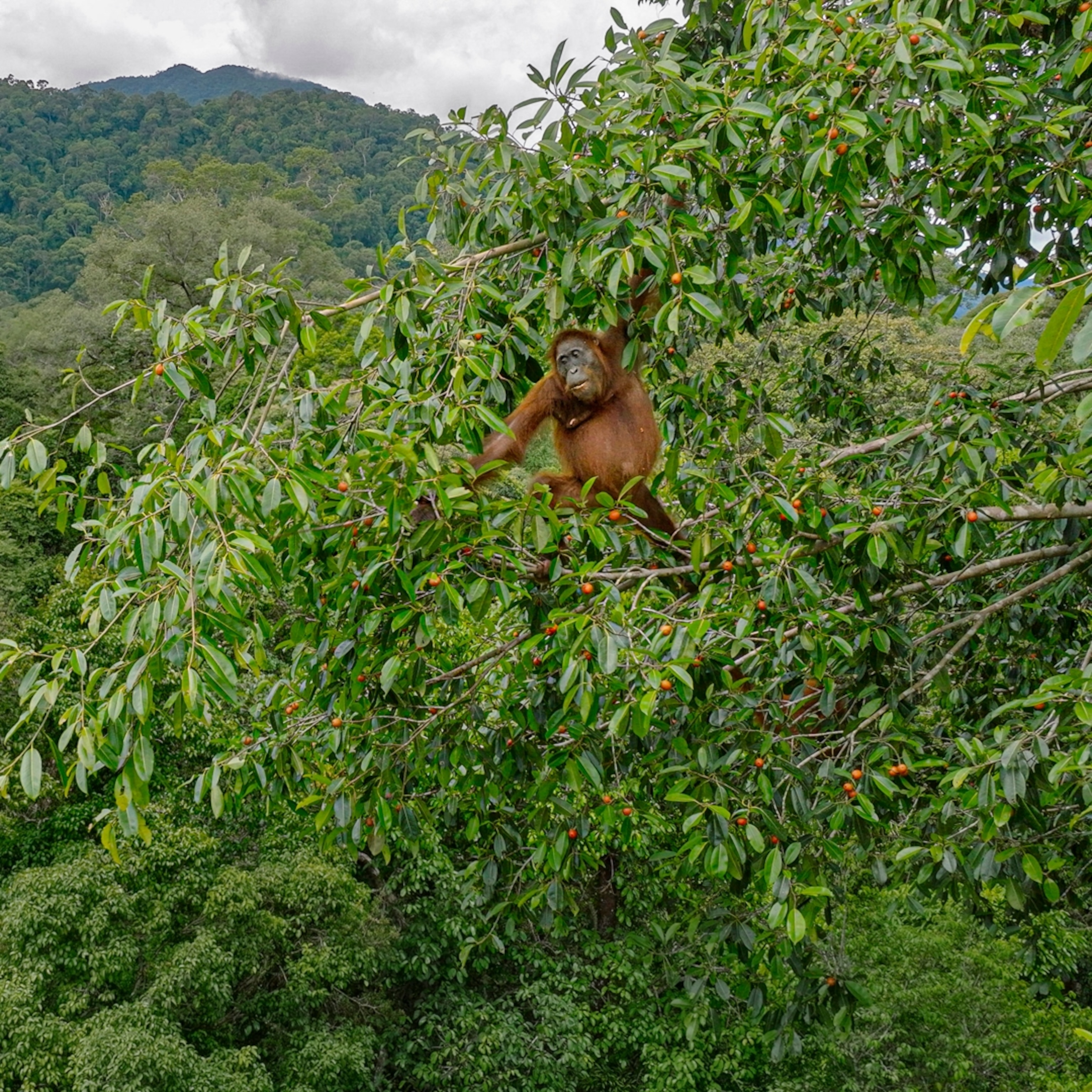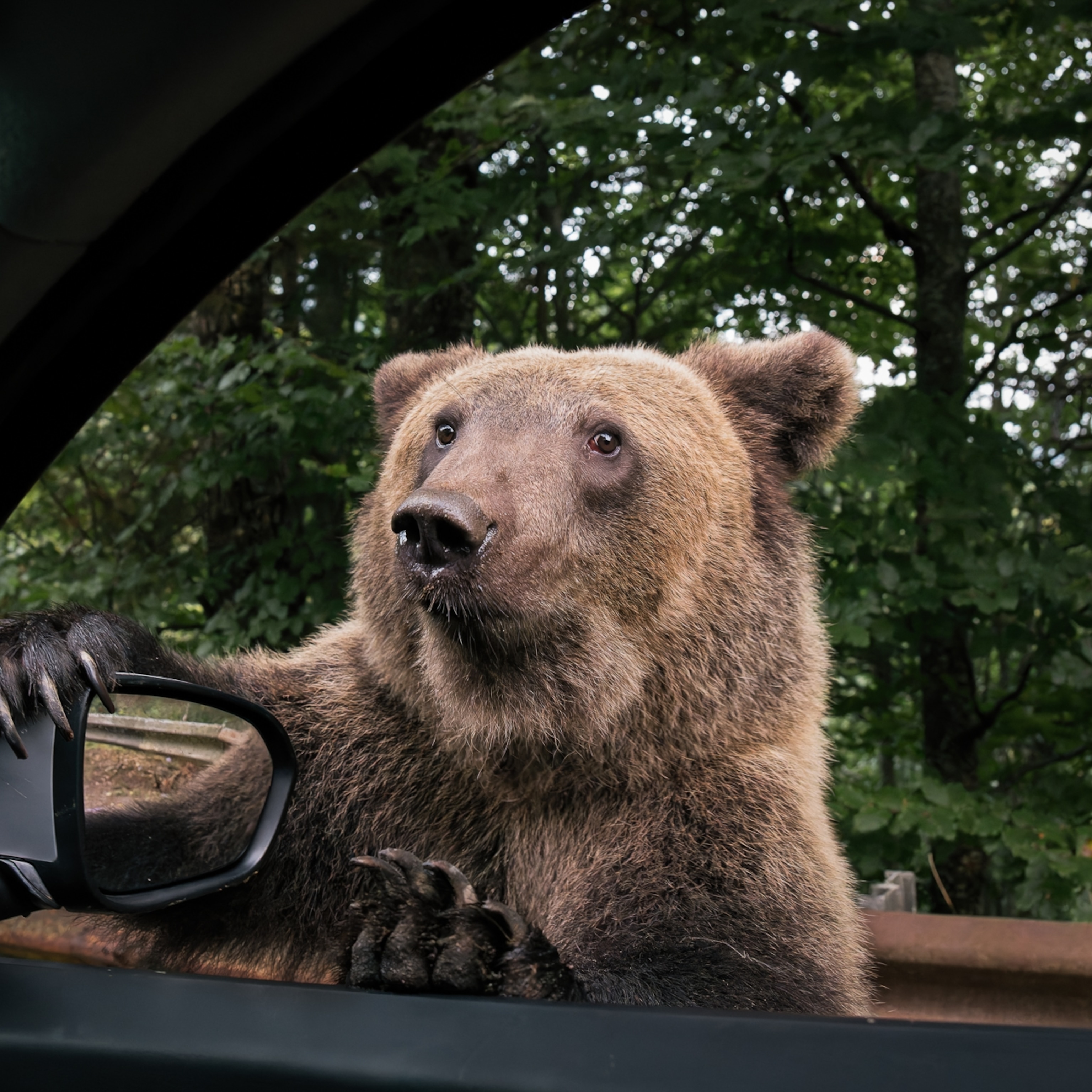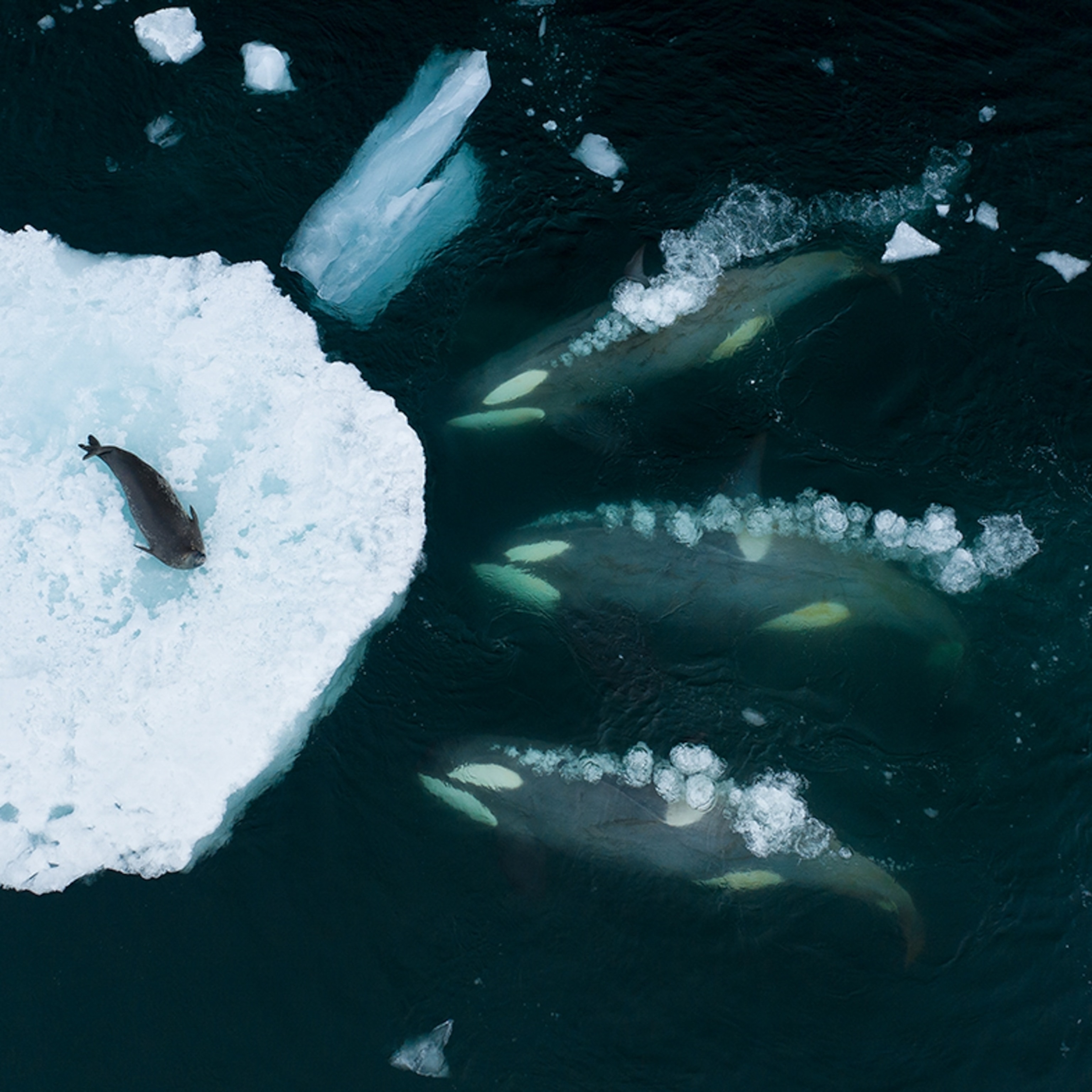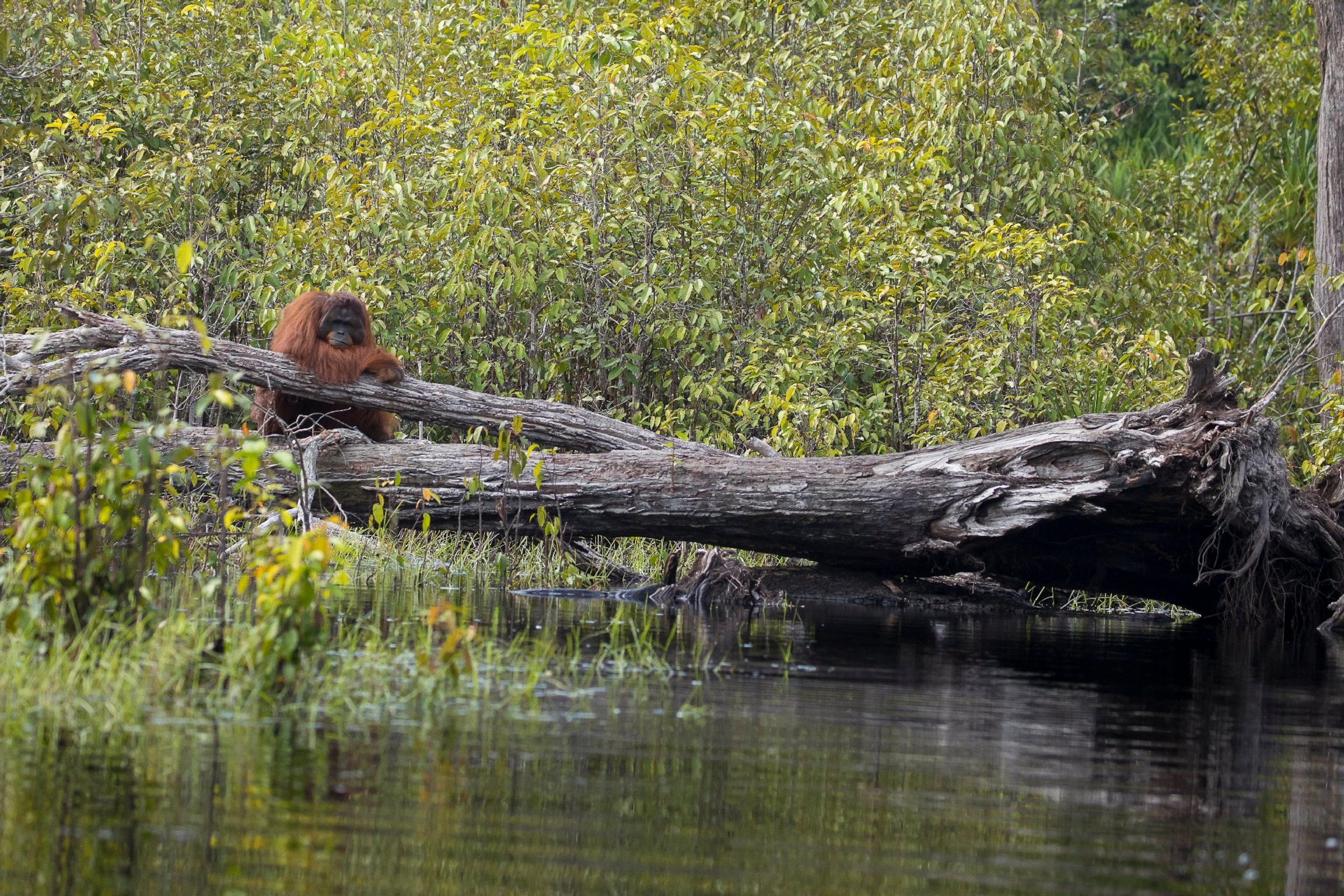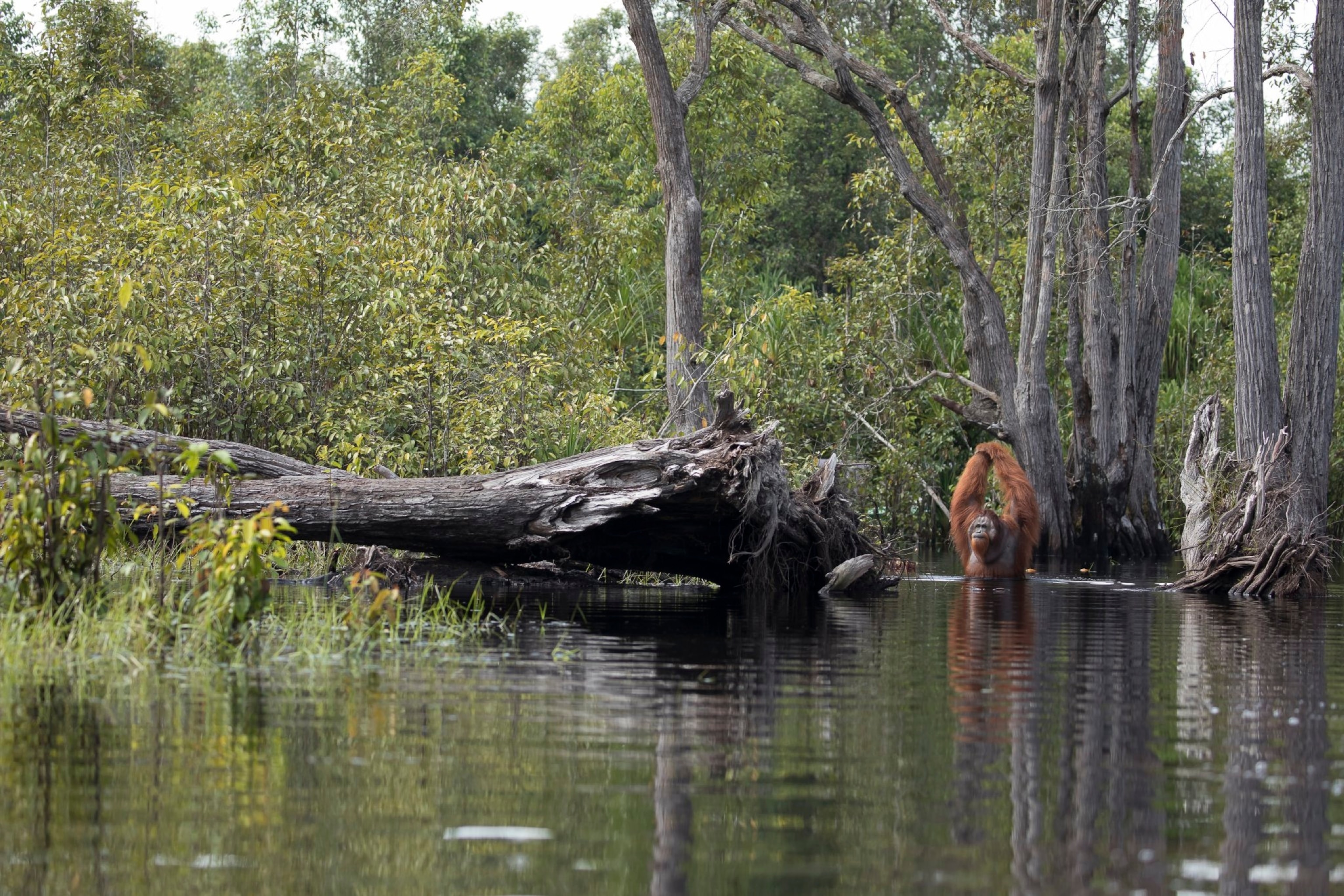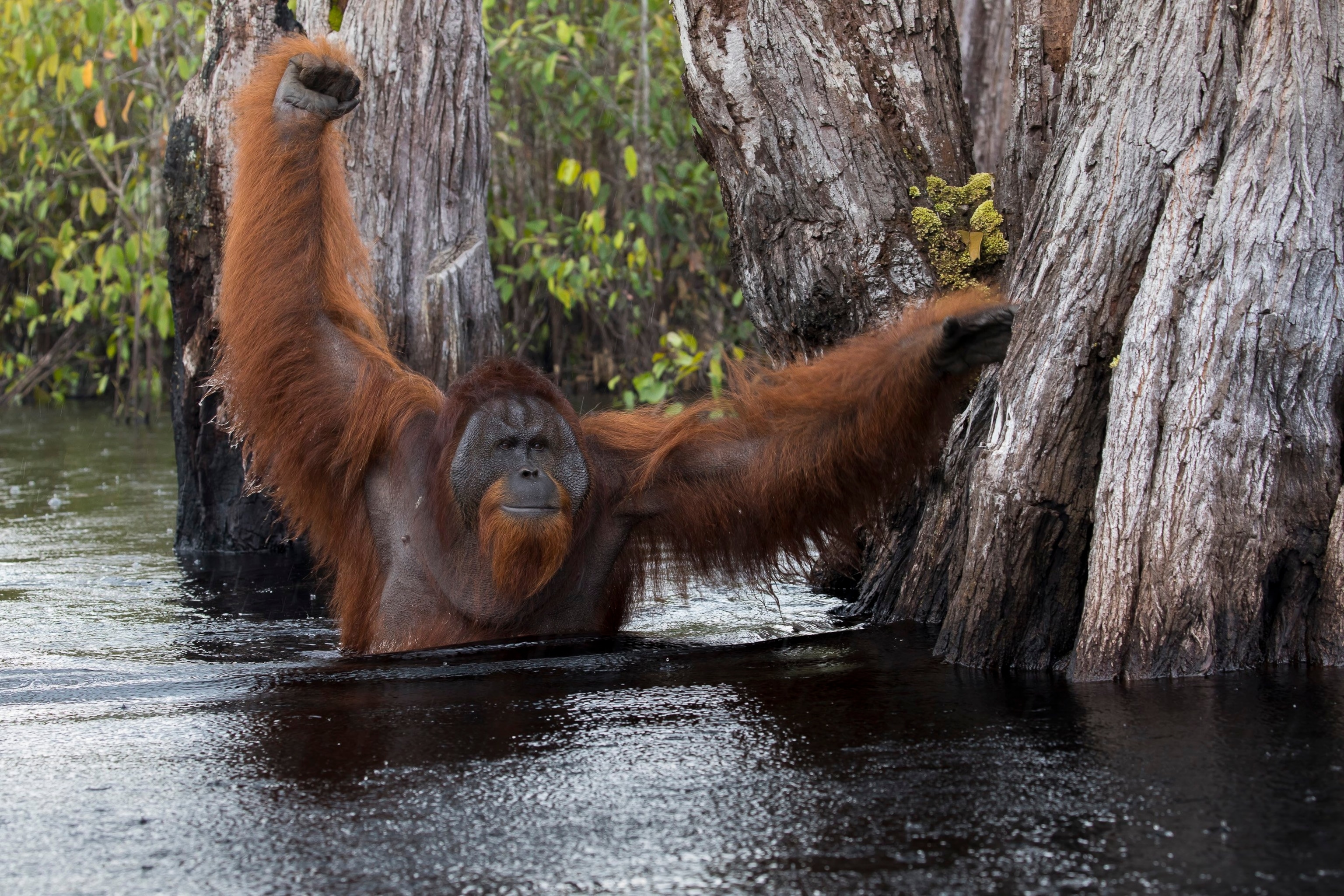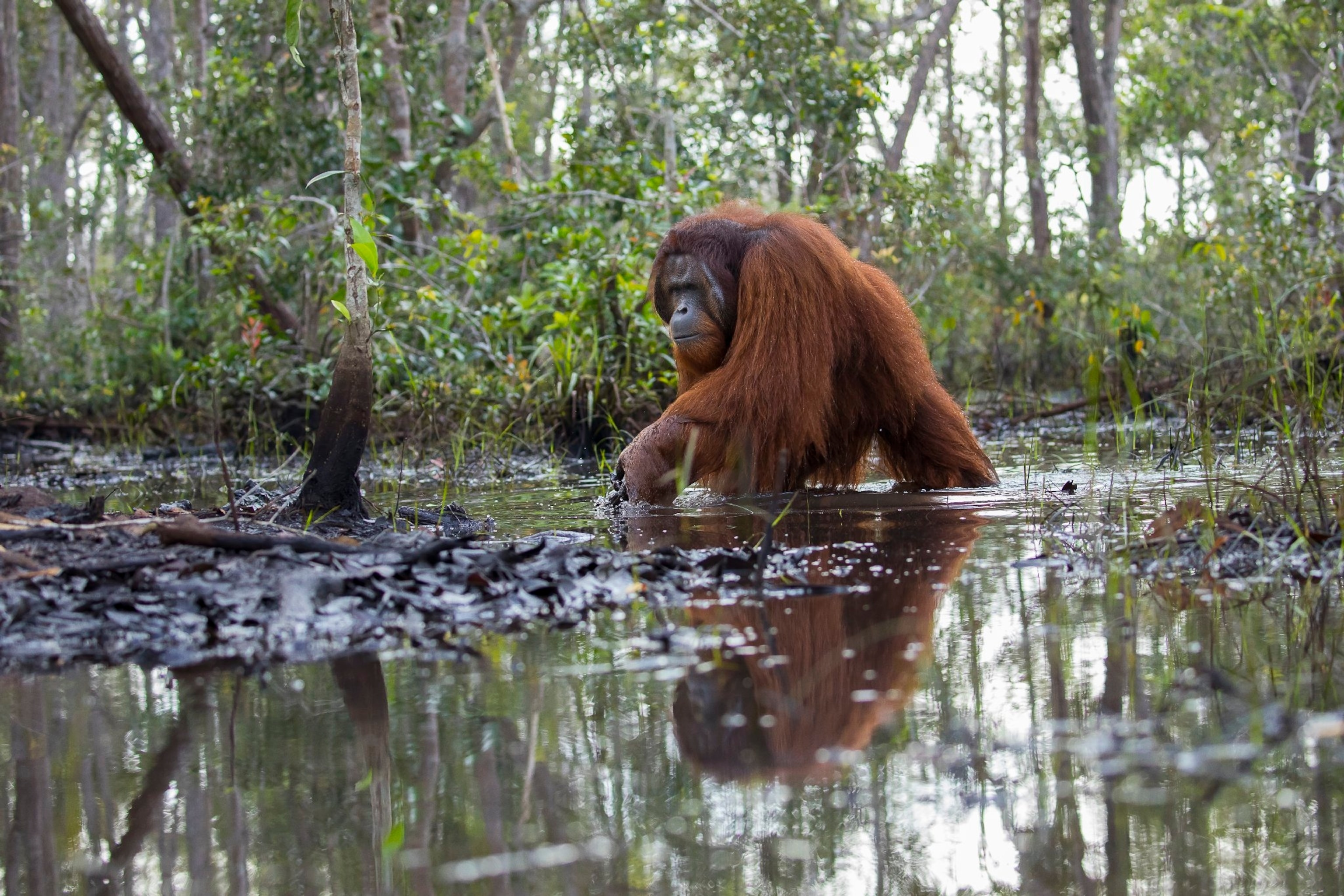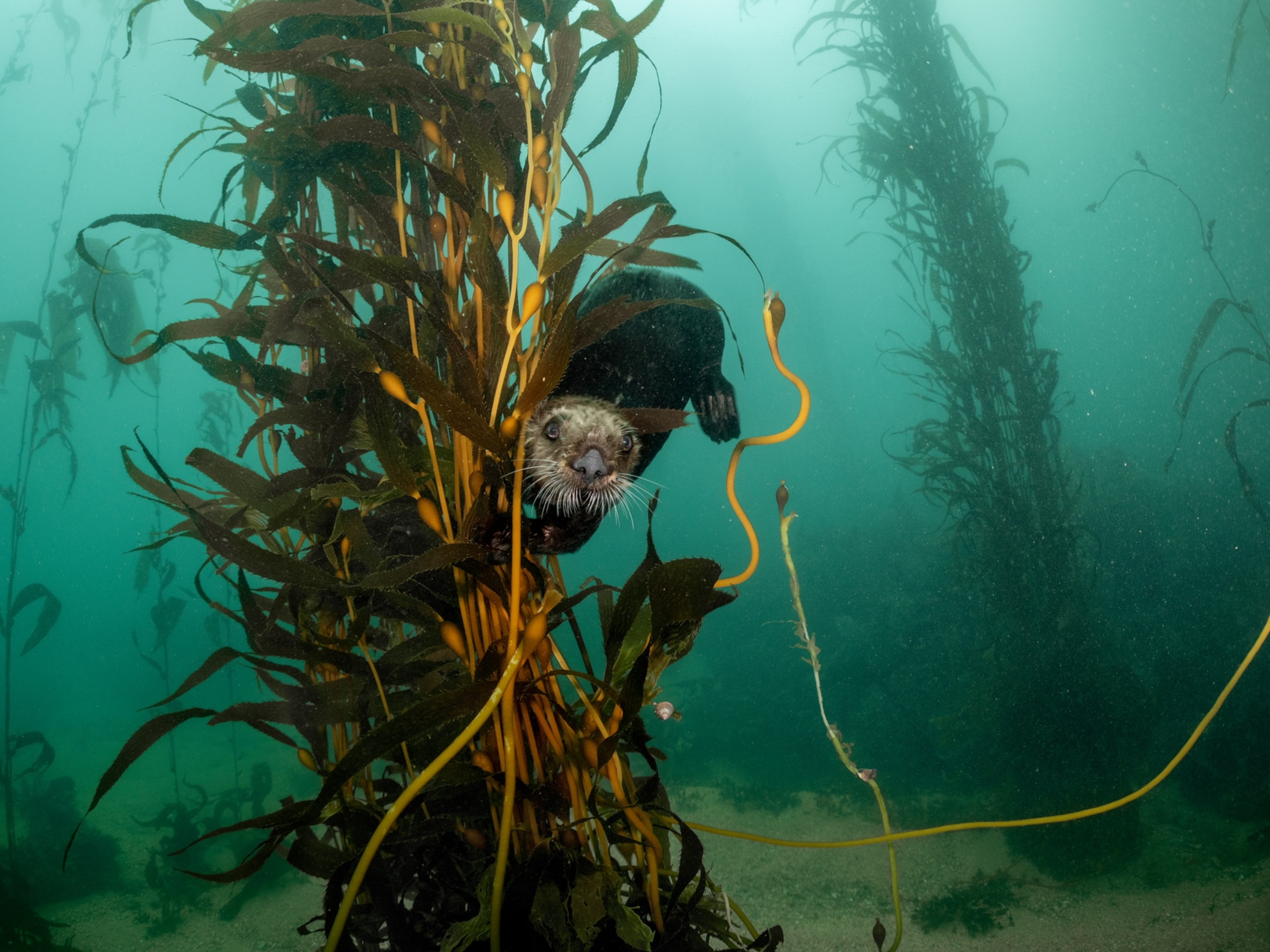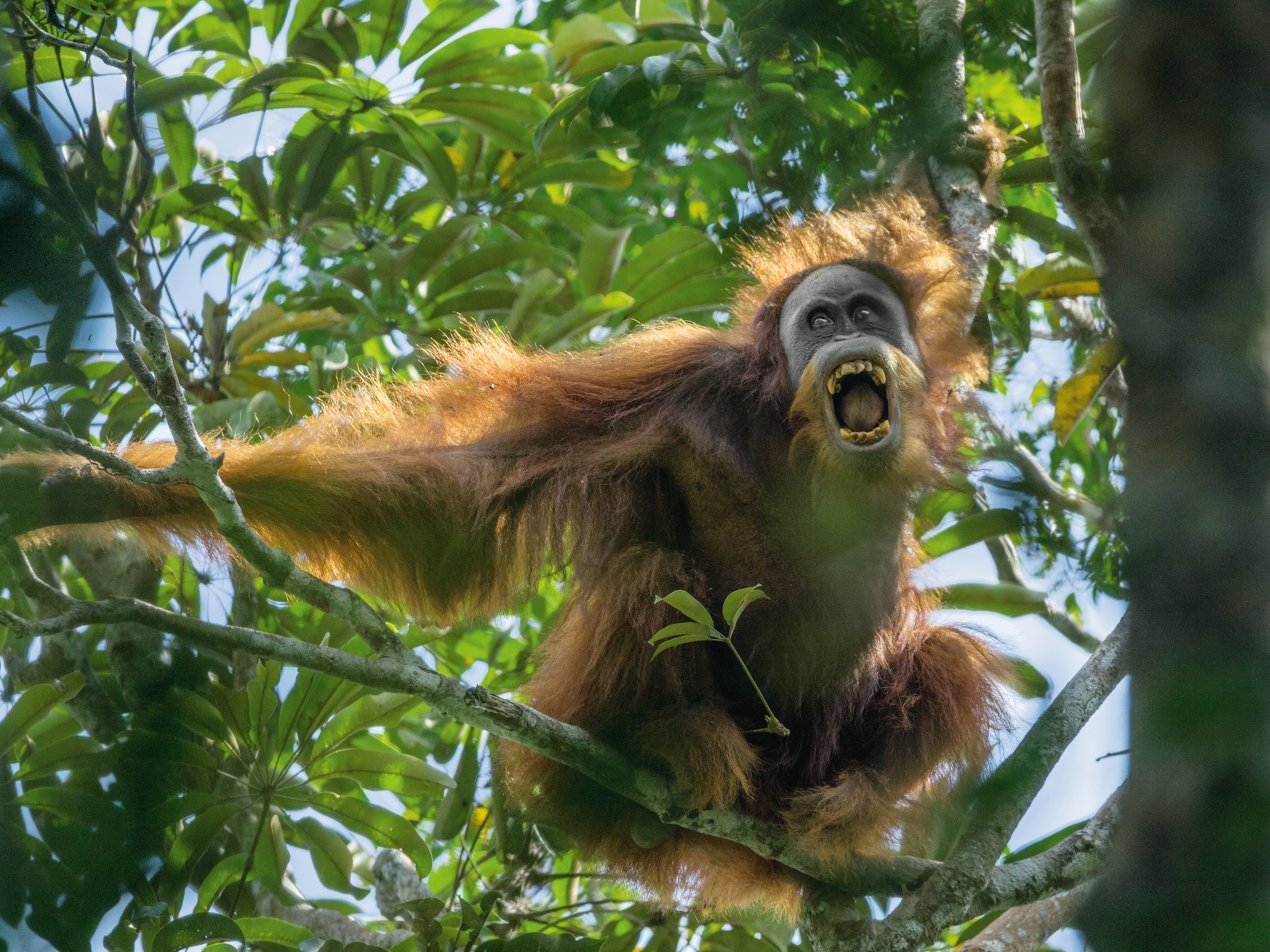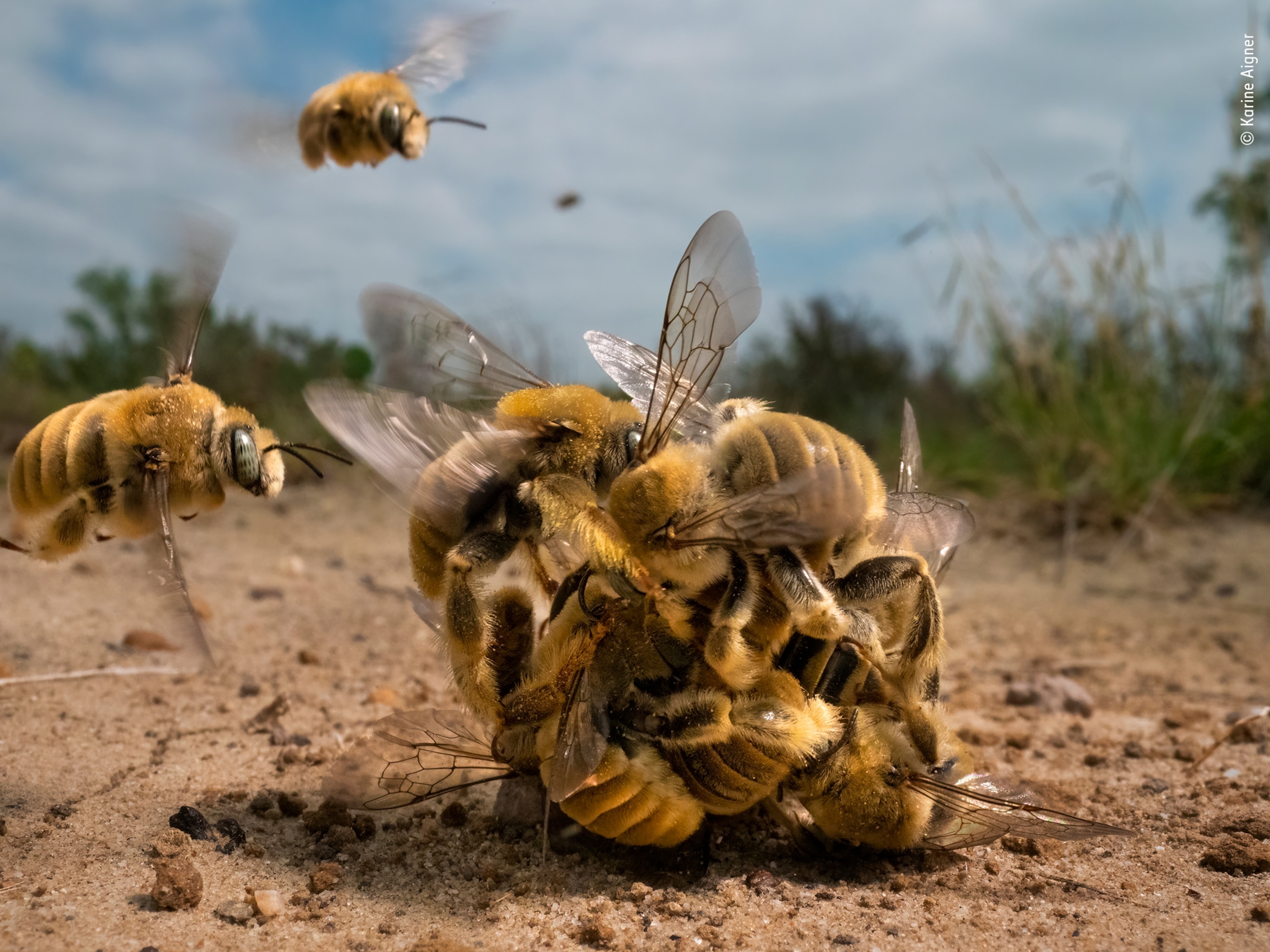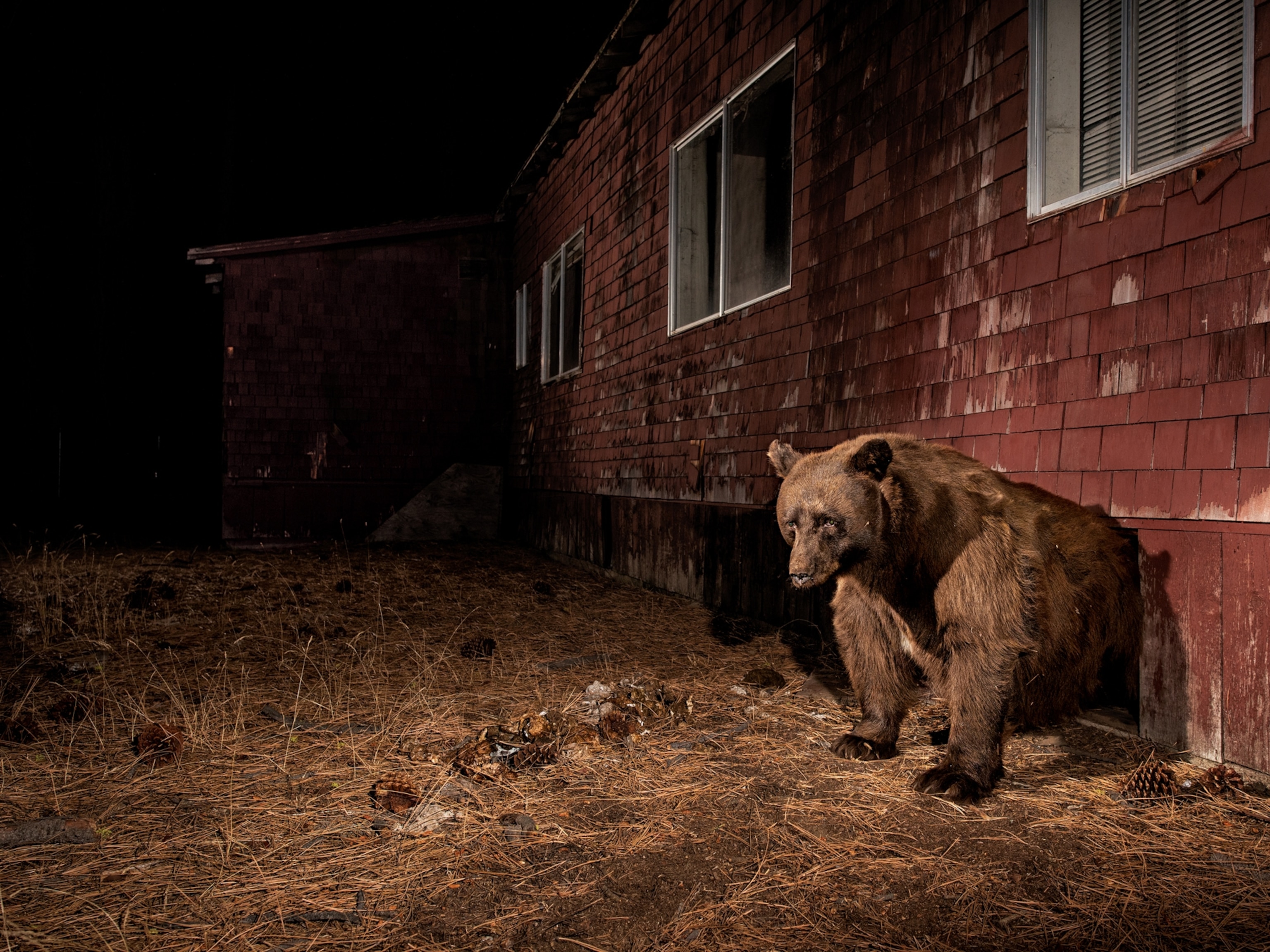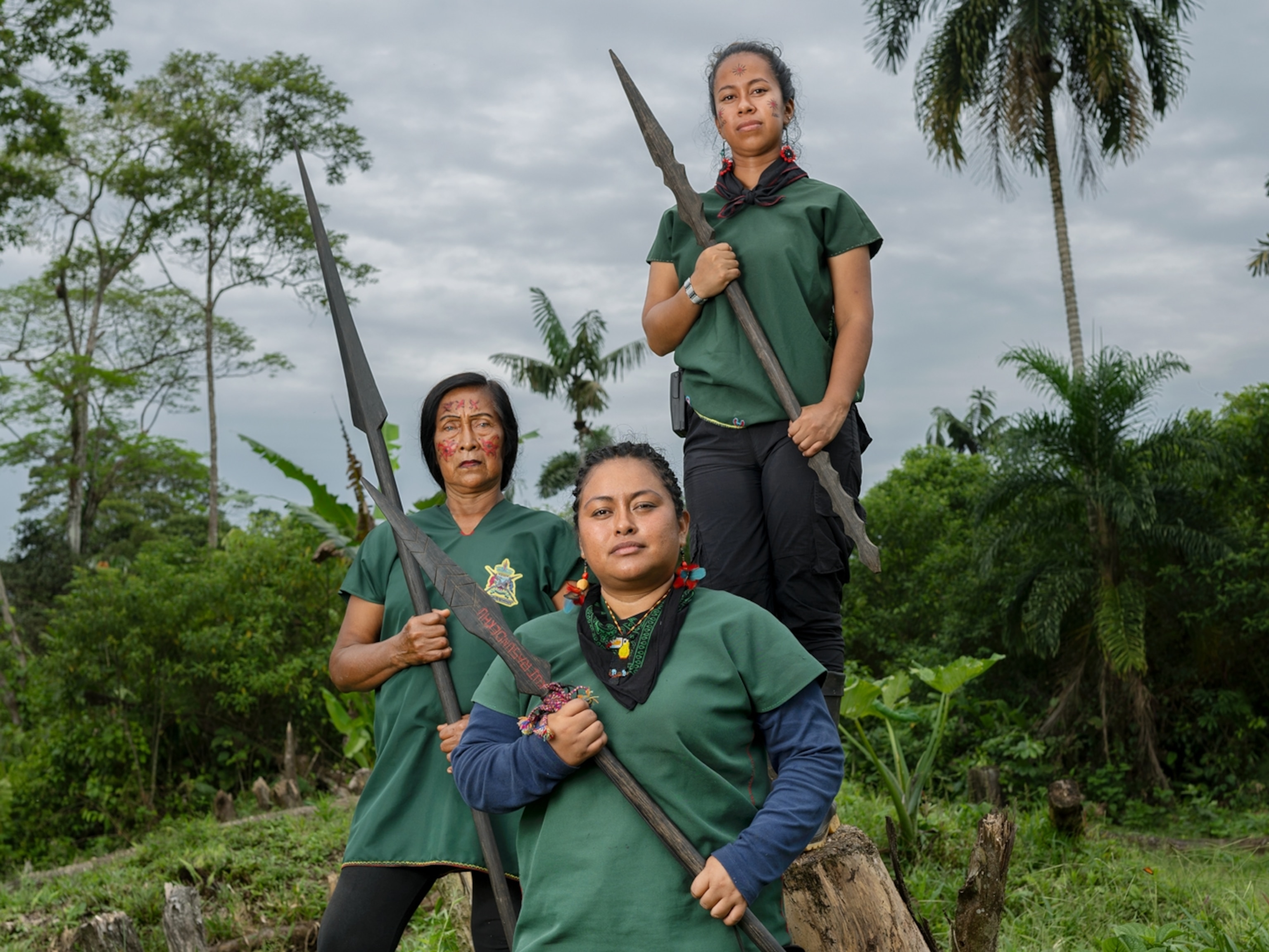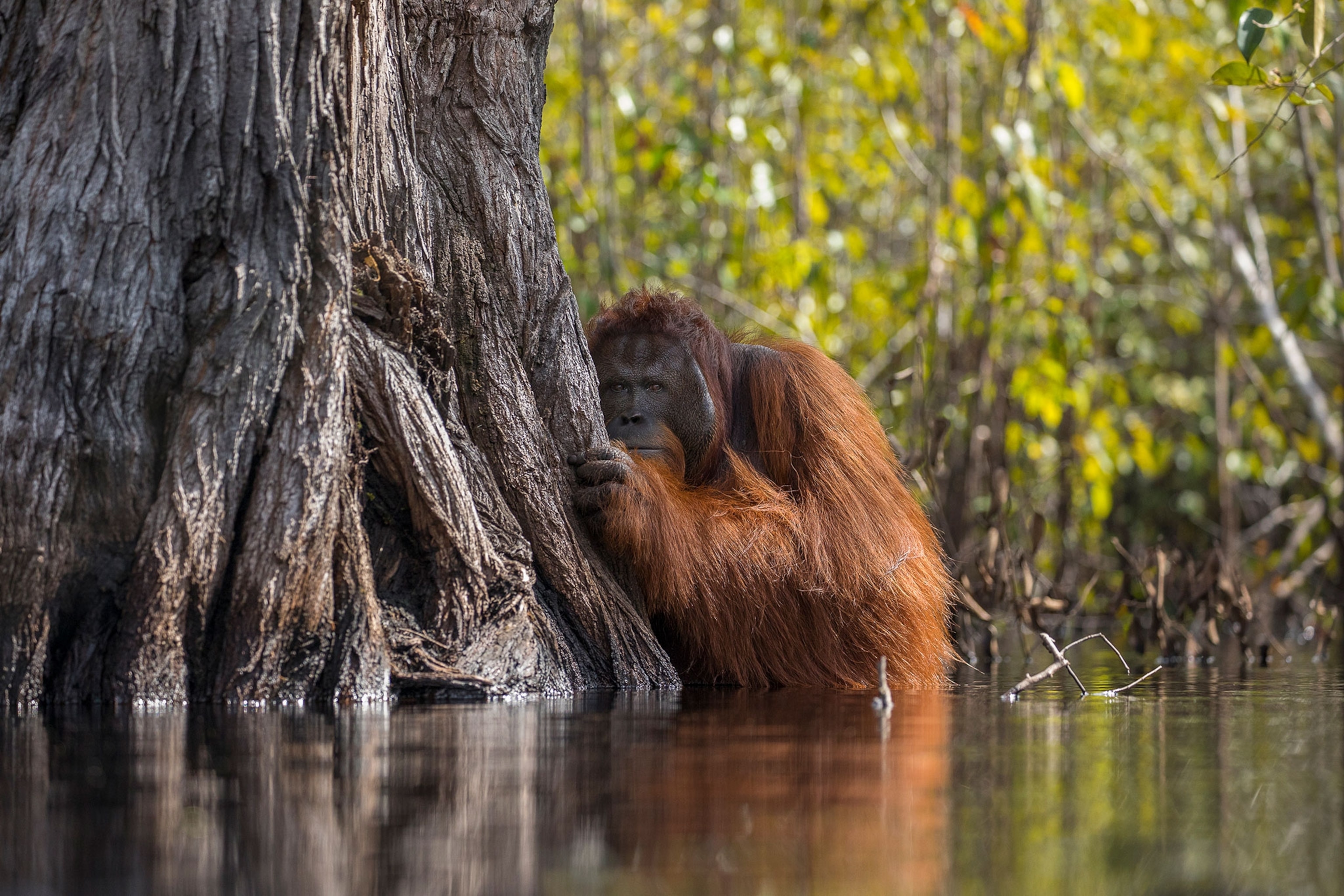
This Striking Orangutan Photo Highlights a Grim Reality
The thought-provoking portrait took the grand prize in the 2017 Nature Photographer of the Year Contest.
Around breakfast time on an August morning in Borneo’s Tanjung Puting National Park, Jayaprakash Joghee Bojan took off his shoes, hoisted his new camera, and slid into cold, chest-deep water stained an opaque brownish-red by the tannins of submerged roots.
Trusting the rangers to warn him if a crocodile appeared, Bojan inched along—gently, to avoid startling the male orangutan wading through the river only yards away.
“Honestly, sometimes you just go blind when things like this happen,” Bojan later tells National Geographic. “You don’t feel the pain, you don’t feel the mosquito bites, you don’t feel the cold, because your mind is completely lost in what’s happening in front of you.”
Bojan knew he was witnessing something special. Orangutans are famously wary of water—their long arms are better suited to swinging in the trees than dog-paddling—so the unusual sight made him wonder. Why would a member of this arboreal species attempt a dangerous river crossing?
It’s possible that widespread habitat loss due to clearing forests for palm oil cultivation has forced the critically endangered primate into areas it would have previously avoided. But whether or not palm oil plantations are behind this orangutan’s atypical behavior, its wary expression and vulnerable posture compel viewers to imagine the threats it faces.
It’s that sense of a rare, weighty moment that led the judges of the 2017 Nature Photographer of the Year contest to select Bojan’s image as the grand prize winner. But the picture almost didn’t happen at all.
A Shot in the Park
Surrounded by wildlife in the hills of the Nilgiris district, Tamil Nadu, India, Bojan grew up with a love of nature. A point-and-shoot hobbyist during the 18 years he worked in Bangalore, he began to seriously pursue photography in 2013, buying his first DSLR and joining National Geographic’s Your Shot community.
Shortly after relocating to Singapore and leaving his corporate job in order to travel and photograph full time, the self-taught photographer encountered rare and endangered primates at the Singapore Zoo. [Go inside the private lives of orangutans.]
“Something triggered,” Bojan says. “I just wanted to go out and see these species in the wild.”
Over the last nine months, he’s crisscrossed Southeast Asia, documenting some of the region’s most charismatic primates. His mission led him to Tanjung Puting National Park, Kalimantan (the region of Borneo belonging to Indonesia). With the help of the ecotourism guides of Orangutan Trekking Tours, a group founded by his friend, Arbain, Bojan photographed 11 wild orangutans in eight days. [See more of our favorite orangutan photos.]
But something was missing. “I wasn’t convinced of my pictures,” Bojan says.
Then a ranger told him about an orangutan about 40 miles away who sometimes crossed the Sekonyer River, and Bojan—aware of how unusual that was—fired up the houseboat to make the trip.
A day of waiting proved fruitless, but Bojan, whose time at the park was nearly up, decided to give it another day. And the next morning, a ranger patrolling by canoe tipped off their crew that he’d spotted the orangutan just a few minutes up the river.
It was the moment he’d been waiting for—the rarely-seen behavior he hoped to document. As the team drew near, Bojan kept the boat at a distance to avoid spooking the orangutan. “I’d been conceptualizing this in my head for a long time,” he says, “and I knew the only way to get the picture I wanted was to be in the river.”
So over the side he went.
The crocodile threat—which Bojan described as “a little tricky”—never materialized. Over the course of about half an hour, Bojan was able to capture the ape’s progression across the river.
At the pinnacle of that sequence: the moment the orangutan returns the camera’s gaze, pressing a wordless message on us, the yet-unknown human audience.
Oil and Water
About half of the packaged goods on supermarket shelves contain palm oil—nearly 90 percent of which comes from plantations that spring up in cleared forests in Indonesia and Malaysia. And while manufacturers and traders of palm oil products have made some steps towards curbing deforestation, the destruction remains largely unchecked.
Clearing forest for plantations decimates orangutans’ habitat, but it also brings them in closer contact with humans. Deprived of their normal food sources of fruit, leaves, and shoots, starving orangutans will turn to young palm oil trees, putting them at risk from farmers who regard them as dangerous pests. Other orangutans, especially infants orphaned by hunting or retaliatory killings, are poached for sale on the black market. [Watch a 360° video of the "school" for orphaned orangutans.]
I’m happy because the orangutan deserves [the prize] more than me.Jayaprakash Joghee Bojan, 2017 National Geographic Nature Photographer of the Year
These varied threats are especially crippling to a shy, solitary species which is slow to mature and whose females only give birth every eight years. The IUCN projects that by 2025, orangutan populations will have declined 82% in 75 years. To an orangutan, that’s only three generations. [See the new orangutan species that's the rarest ape on earth.]
Bojan took this sobering situation to heart. “When you fly from Jakarta to Borneo,” he says, “you literally cannot see anything other than palm oil farms.” And while recognizing the situation's complexity—palm oil plantations provide jobs and an economic boost to areas that desperately need it—he empathizes with the orangutans.
"It's easy to relate to them, because I find them so human, the way they look and act; they have kind faces, tender hearts."
While broad policy change is needed, there is some help already on the ground: Arbain’s “green team,” a group of locals whose ecotourism work teaches people the importance of conserving this habitat. The group even invests a portion of their earnings in order to buy land to prevent it being sold to palm oil plantations.
“It’s amazing to see how crazy and passionate they are,” says Bojan.
He plans to donate a share of his award money from this contest to Arbain’s group in order to support their conservation work—and to become more involved in conservation himself. [Learn more about Arbain's group here.]
“While I’m excited I won the competition,” he says, “I’m also very happy this particular image won, because I think the orangutan deserves it more than me.”
